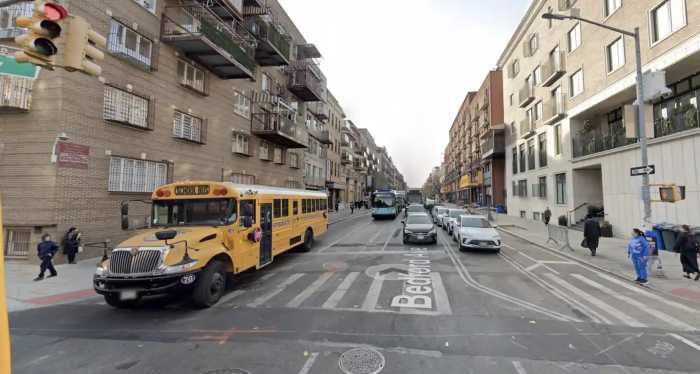Bike lanes improve the health, safety, and environment of the city. However, the two-way “parking-protected” bike lane on Prospect Park West has caused serious safety concerns and unnecessary inconvenience for local residents — especially senior citizens, people with disabilities, families with children and neighborhood businesses. To access the park, pedestrians must cross multiple lanes of one-way moving traffic. Then they must pass through a floating row of parked cars that obstructs their view of the two-way bike lane, which they must enter blindly, before reaching the curb.
Under the guise of “traffic calming,” and ignoring other viable alternatives, the city removed an automobile lane, thereby causing congestion as well as significant air and noise pollution. When drivers drop off elderly and disabled passengers and local businesses access customers on Prospect Park West, a busy thoroughfare is reduced to a single lane.
That is why we support moving the two-way bike lane to the “green-way” already on the West Drive of adjacent Prospect Park. In the alternative, the city could follow its own Master Bicycle Plan, approved by Community Board 6 in 2007, by changing the current configuration into a simple “Class II,” one-way southbound lane on Prospect Park West paired with a northbound lane on Avenue.
Last year, the Department of Transportation installed this two-way obstructed lane and has since converted this “pilot program” into a permanent fixture without properly evaluating it or addressing local residents’ concerns. And it has done so while relying on inaccurate and spotty data. As a matter of fact, the City Council just passed a package of legislation that, for the first time, requires the reporting of bike and pedestrian accidents. This means that there are clearly city-wide concerns; how can anyone assess the safety of any bike lane without this kind of critical data? This is exactly the kind of data that was missing in the Prospect Park West case.
Councilman Brad Lander claims that 75 percent of the community supports the lane. However, by his own admission, his survey was not a statistically valid referendum and was never intended as such. The survey did not mention our alternatives or any others, for that matter. We know that the hundreds of residents and neighbors of Prospect Park West, including many cyclists, who have been negatively affected by the lane, were never polled.
Supporters of the lane say that it has reduced the speed of cars and increased safety. But the pedestrians facing new dangers and the travelers who can no longer move efficiently should be given consideration as well.
We think our alternatives are sound and will make our beautiful, historic neighborhood an even safer and more pleasant place.
Louise Hainline is a member of Neighbors for Better Bike Lanes.

























